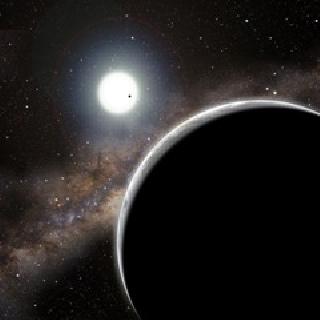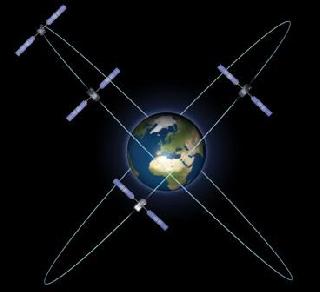
The “invisible” planet Kepler-19c, seen in the background in this artistic illustration, was discovered solely through its gravitational influence on the companion world Kepler-19b – the tiny dot crossing the star’s face.
CAMBRIDGE, US (BNS): A distant planet’s unusual transit time variations around its host star has led astronomers to predict the presence of an “invisible world” nearby.
The planet, Kepler-19b that revolves around its Sun-like parent star Kepler-19 every 9 days and 7 hours, alternately runs five minutes late or early in each transit.
Bearing a temperature of about 482 degrees Celsius, Kepler-19b orbits the star at a distance of 8.4 million miles. The planet has a diameter of 18,000 miles, making it slightly more than twice the size of Earth.
The planetary system is located 650 light-years from Earth in the constellation Lyra.
The unusual transit time variations of Kepler-19b make room for a second, “invisible” planet that is tugging on it, say the astronomers who have made the discovery by using NASA’s Kepler spacecraft.
If Kepler-19b were alone, each transit would follow the next like clockwork. Instead, the transits come up to five minutes early or five minutes late. Such transit timing variations show that another world’s gravity is pulling on Kepler-19b, alternately speeding it up or slowing it down.
“This invisible planet makes itself known by its influence on the planet we can see,” says astronomer Sarah Ballard of the Harvard-Smithsonian Center for Astrophysics.
Both the visible and invisible planets revolve around the same star, Kepler-19.
However, the researchers do not know anything about the invisible planet, named Kepler-19c, other than that it exists. This planet weighs too little to gravitationally tug the star enough for them to measure its mass. Moreover, the Kepler spacecraft hasn’t detected it transiting the star, suggesting that its orbit is tilted relative to Kepler-19b.
“Kepler-19c has multiple personalities consistent with our data. For instance, it could be a rocky planet on a circular 5-day orbit, or a gas-giant planet on an oblong 100-day orbit,” says Daniel Fabrycky of the University of California, Santa Cruz.
The researchers expect to find more details about this "invisible world" and its orbit as the Kepler spacecraft will continue to monitor Kepler-19 throughout its mission.
The new study’s findings appear in The Astrophysical Journal.
 Previous Article
Previous Article Next Article
Next Article











The Indian Air Force, in its flight trials evaluation report submitted before the Defence Ministry l..
view articleAn insight into the Medium Multi-Role Combat Aircraft competition...
view articleSky enthusiasts can now spot the International Space Station (ISS) commanded by Indian-American astr..
view article